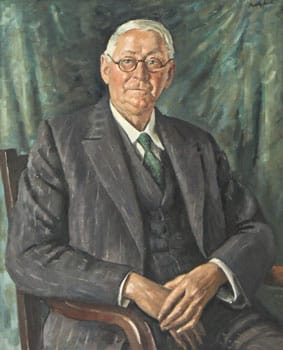David Bristow: A Gambler’s Life – Bill Winshaw
By David Bristow, 16 July 2015
At a tasting some years ago, a wine luminary said to a group of avid admirers: “Wine farming is such a gamble it’s a wonder the Lord allows it all.” This is the story of an ardent gambler who put much wine, and other tipples besides, on our tables.
If ever you’ve sipped a glass of Chateau Libertas, Nederburg, Tassies or a whole bunch of other wine from Alto to Zonnebloem, you should raise a glass to William Charles Winshaw. Many of South Africa’s most popular wine brands belong to producer-wholesaler Distell and this corporation can trace its origins to Winshaw and his business dealings at the beginning of the 20th century.
After phylloxera arrived in Cape Town in 1886 and in a very short time decimated that local wine industry, Cape wine farmers planted big-yielders such as Cinsaut. This led to a wine glut where wine was poured away. Things were looking bad by the time American doctor Bill Winshaw landed at the Cape Town docks.
He had been contracted to oversee the transport of 4 000 mules, bought in New Mexico, and headed for the British Army: This was midway through the South African War and four-legged transport was at a premium, what with African horse sickness decimating the British stock like a phylloxera plague. Once the mounts were delivered, the good doctor entered the fray on the British side and stayed on.
He was well qualified on different fronts. Not only was Winshaw a medical doctor, as a younger man he had ridden with the Texas Rangers. Born in Kentucky in 1871, he ran away from home at the age 11, tried some gold panning out west and then washed up in New Orleans where he put himself through medical school on his gambling winnings (what he could have bought with his losings is not recorded).
When war ended in 1902, Winshaw opened a medical practice in Cape Town and not long after that rented a farm in Stellenbosch where he started to experiment with making wine (on his stove, history records, but just why they do not say).
Because of the dearth of local supply, he imported Concord grapes from his homeland and in 1909 opened the Stellenbosch Grape Juice Works. By the end of World War I, Winshaw was one of the big movers on the local wine scene, but hard times following “the great” war saw him sink into liquidation by 1920. Ever the gambler and never the vanquished, Winshaw pulled himself up by his bootstraps, as they say in Texas.
For the record, and to close a viticultural circle here, the bug that carried the phylloxera disease to Europe and then to the Cape originated in North America where the local vines had developed a symbiotic resistance. After the rest of the world’s vineyards had been laid to ruin by the unstoppable disease, rootstock from America was used for the grafting and this saved the industry and, in a way, us from an awful future.
Ne’er say die, in 1924, at the age of 53, Winshaw joined one Gideon Krige in a distillery venture in Stellenbosch and later, with borrowed money, Winshaw bought out Krige. His two sons, Young Bill and Jack joined the family business and they renamed it Stellenbosch Farmers Winery. At that time South Africans were sold on sweet wines but Winshaw pêre et fils set about making predominantly semi-sweet and dry wines.
In the 1950s, they introduced to the market Lieberstein and within a short period it became the biggest selling label… in the world: three million cases by 1964. Around this time the company went public and South African Breweries (currently the world’s second-largest brewer) acquired a controlling share. In 1966, they acquired Nederburg Estate and today this 200+ year old farm is not only the flagship of the business but also one of South Africa’s foremost wineries.
In 2000, SFW merged with another liquor giant, Distillers Corporation, to create Distell. Distillers was founded in 1945 by Anton Rupert and soon accounted for the majority of hard tack sales in the country, later adding the Bergkelder and more recently the iconic Amarula digestif to its cellars. Add Van Ryn and you have a company that produces a veritable lake of wines, brandies, gin, cane spirit, vodka, whisky (South African) and cider-pops (Hunters, Savanna).
Old Bill kept his hands on the taps right up until 1962. He died at the age of 96 in 1967 by which time he had seen his little kitchen experiment grow into South Africa’s – and indeed one of the world’s – leading wine and liquor suppliers. Young Bill and his sibling Jack stayed on in the business and decades later, Winshaws were still involved.
It is a comfortable homily that, in order to know where you are going you need to know your provenance. This trip down memory lane will help to illuminate the road for many of us that cut our drinking teeth on the likes of Lieberstein or Grünberger, Tassenberg or Oude Libertas, Grand Mousseaux or Cold Duck.
What you do with this knowledge I cannot determine, but for the fact that, since you are reading this, it has been and no doubt will continue to be a rewarding journey.
- David Bristow has written multiple books and magazine features on travel, nature and African culture. He also one of the Racontours.co.za guides.









Comments
0 comment(s)
Please read our Comments Policy here.